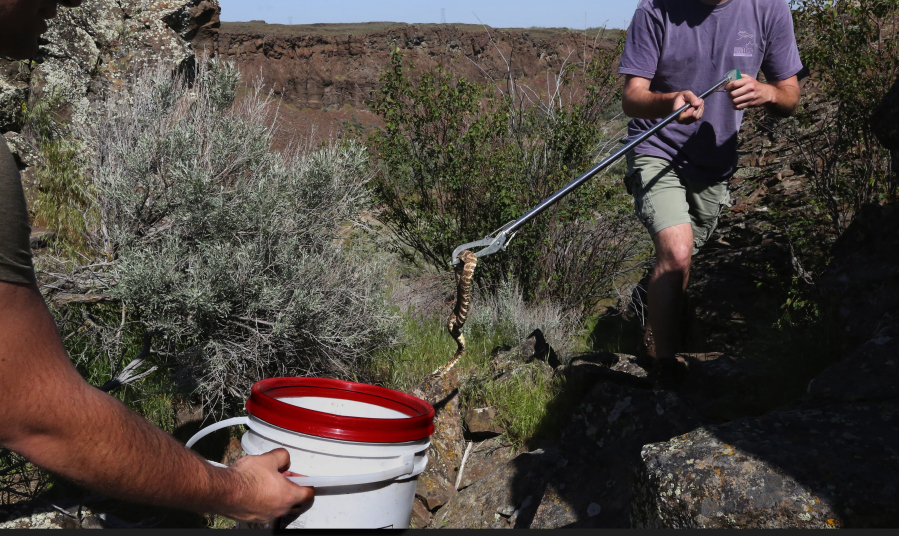FRENCHMAN COULEE — “Shall we go catch some snakes?” asked J.D. Brooks.
It was a sunny afternoon in May, the first hot day of the year in the Columbia Basin. For rattlesnakes, and the researchers who study them, temperature is everything — and Brooks was eager to make the most of a short season.
From late April to early September, when other outdoor enthusiasts are doing their best to avoid Washington’s only venomous snake, Brooks and his fellow graduate students at Central Washington University are on the hunt.
Their quarry is Crotalus oreganus, the Northern Pacific rattlesnake. Armed with snake tongs and 5-gallon buckets, the group taking to the field last month is part of a 30-year quest by CWU biologist Dan Beck to uncover the secrets of a creature that gives most people the creeps.
Beck and his students have staked out dozens of snake dens across Central and Eastern Washington. They’ve documented the species’ habits, developed ways to monitor growth rates based on rattle size, and deployed tiny transmitters to track the animals’ movements.
Among their findings is that Northern Pacifics are surprisingly mellow homebodies — with more of a social life than you might expect.
Along the way, Beck says he’s also learned a lot about human nature.
“The science is fascinating, but as I get older I get more interested in people and the way we react to rattlesnakes,” he said. “They are a metaphor for what we fear.”
When he first started studying Washington’s rattlers, it was common for people to stomp any snakes they encountered and even destroy dens. That’s changed, and Beck hopes his efforts to introduce school kids, scout troops and civic clubs to the state’s sole rattler species have helped.
“You just sit down and talk with people about the amazing stuff snakes do,” he said. “When you take away the superstitions and stories and replace them with knowledge and understanding, you end up with respect rather than fear.”
Northern Pacific rattlers don’t seem to be in peril in Washington — but researchers don’t have a good handle on the population as a whole,Beck added.
“Rattlesnakes are survivors,” he said. “Still, I’ve noticed that a lot of the dens over the years where we used to see a lot of snakes — we don’t see them anymore.”



